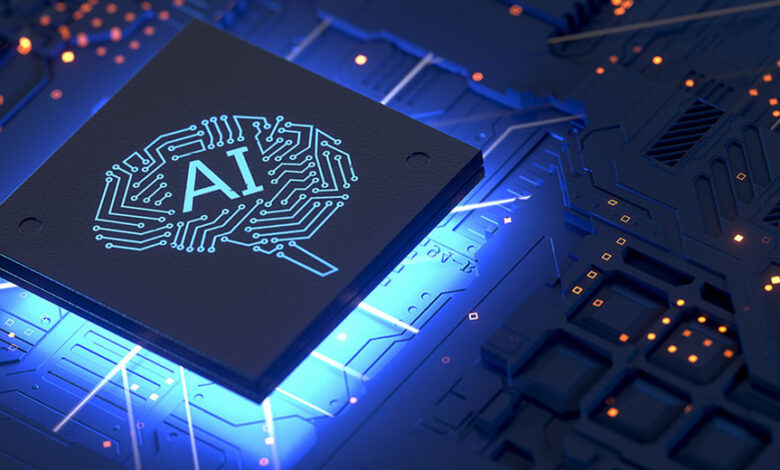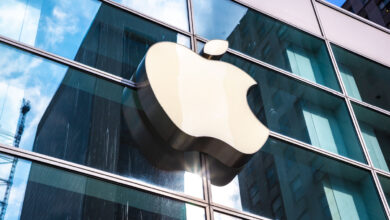Will AI-Enabled Processors Prompt a PC Supercycle This Year?

Artificial intelligence (AI) has heralded the start of a technological revolution. This frenzy questions whether AI will, in the next year or two, set in motion a desktop and laptop “supercycle.”
A supercycle period is marked by a significant surge in PC sales and upgrades, driven by compelling advancements in technology that persuade consumers and businesses to update their hardware at an accelerated pace.
Given the flattening of overall sales since Covid-19 ended, the PC industry could sure use it.
Like any transformational technology, AI’s effects on consumer and corporate markets are complex and require a comprehensive analysis.
Prominent PC CEOs have shown off new notebook PCs with AI-embedded mobile processors for months. Intel, AMD, and Qualcomm are incorporating this new technology into their products this year and beyond.
Many industry experts predict AI PCs will start a supercycle upgrade phenomenon in the second half of the year when more AI PCs hit the market. But is this likely?
Recently, Intel and its partners showcased AI PCs equipped with on-device generative AI capabilities for enhancing photographs, movies, and presentations. These devices also feature real-time language and speech translation, effectively eliminating communication barriers.
However, removing emotion from the equation, the supercycle upgrade phenomenon may be more muted than many expect despite the hype.
Consumer Market Dynamics
AI, particularly gen AI cloud-based applications like OpenAI’s ChatGPT and Google’s Gemini, has been wildly popular among desktop and laptop users. While these apps do not require a dedicated AI processor, we expect customers to upgrade to newer computer models as AI-powered features such as voice assistants, predictive text, and image recognition enhance PC usability.
Proponents claim that as AI algorithms improve, they will uncover myriad applications that require more computational power, leading people to buy more powerful PCs and laptops. There is logic in this thought process, as AI-driven gaming and immersive VR apps may increase demand for high-performance computer hardware.
However, skeptics argue that AI may improve user experiences but not be an overwhelming catalyst for sales. The commoditization of basic AI functions across many devices may reduce user motivation to update. Moreover, economic uncertainty stemming from inflation and high interest rates may limit discretionary IT upgrade investments.
Corporate Customers Slow To Adopt Arm Flavors of Windows
Compatibility issues have historically kept enterprise clients from adopting the Arm version of Windows. Many enterprise processes depend on x86-optimized software and apps. Adapting these vital tools to Arm platforms requires substantial testing, rebuilding, or replacement. Such projects are resource-intensive and may disrupt workflow.
The seamless integration of Arm devices with enterprise infrastructure, including peripheral devices and management systems, hasn’t been as smooth as many customers would have liked over the past few years. This compatibility gap (especially at the app level) has deterred organizations from investing in Arm-based Windows solutions.
A fear of performance parity and optimization on Arm architecture also contributes to enterprise hesitance. While Arm processor technology has improved, reservations remain about their ability to match x86 processors in resource-intensive activities.
Businesses that depend on fast and reliable computer performance have been cautious about switching to Arm-based Windows machines. However, over the past two years, Microsoft has begun providing assurances of equivalent or greater performance levels and improved compatibility with the existing software ecosystem to reduce enterprise client hesitance to adopt Arm versions of Windows.
The latest Arm Windows 11 builds reportedly have greatly improved program compatibility, performance, and battery life.
Qualcomm’s Snapdragon X Elite Stands Out
Qualcomm is banking on its new and improved mobile computing offerings, which offer best-in-class performance and efficiency that could be a tailwind for the chip manufacturer in this PC upgrade supercycle.
If recent benchmark results are accurate, its new Snapdragon X Elite offering, announced a few months ago, positions the company as the clear leader in the AI-enabled silicon space against Intel, AMD, and even Apple. It’s worth noting that Apple released its latest M3 chipsets days after Qualcomm introduced its Snapdragon X Elite.
While Snapdragon X Elite chips are powerful and energy efficient, Apple’s chips, including the A-series in iPhones and iPads, are known for their perfect integration with Apple’s hardware and software environment.
Apple uses this holistic approach to fine-tune its CPUs for optimal speed and power efficiency, creating a user experience that often sets industry standards. Apple’s robust ecosystem management allows for rapid adoption of new technologies and optimizations, further strengthening its competitive edge.
Viewed through that prism, Qualcomm’s approach appears to imitate Apple’s integration approach, particularly at the silicon and operating system levels.
Qualcomm claims its internal benchmarking outperforms Apple’s latest M3 chip solutions, a revelation that might shock ardent Apple fans, especially given that the Snapdragon X Elite apparently surpasses the M3 chips in performance and battery life.
However, the differences between the macOS and Windows 11 operating systems make the analysis challenging.
Recently, Qualcomm has been permitting reporters, bloggers, and reviewers to utilize reference design laptops for benchmarks without interference. The company demonstrated a new wave of applications tailored to take advantage of the Snapdragon X Elite’s unique capabilities, especially its best-in-class NPU (neural processing unit). More significantly, Qualcomm demonstrated several PC games that ran flawlessly in emulation.
Nevertheless, cynics would state that AI’s influence on desktop and laptop sales depends on various factors — budgetary constraints, legacy infrastructure dependencies, and AI adoption across industries are key.
The Outlook for AI Impact on PC Sales
While no one wants to be a Debbie Downer, let’s face it: AI’s impact on desktop and laptop sales in the next year or two depends on a complex interaction of factors. It all boils down to AI’s ability to create compelling transformative user experiences, and business customers may respond differently from traditional consumers.
AI-powered features might potentially boost consumer PC sales, but market saturation and economic uncertainty may limit this, primarily due to the damaging impact of inflation on discretionary spending. With the average price of gasoline in the U.S. ranging from nearly $4 per gallon to almost $6, depending on what state you live in, can the typical consumer rationalize upgrading their legacy PC?
In contrast, corporate and enterprise digital transformation and remote work enablement may stimulate demand for AI-optimized PCs. Although Qualcomm — and, to a lesser extent, AMD and Intel — now offer competitive semiconductor ingredients to all the major PC OEMs, the issue remains whether AI-optimized applications are enough to convince users to upgrade. I’m holding my breath a bit.
Undeniably, the benefits of these new AI offerings include reduced latency, longer battery life without compromising performance, and local AI-produced data management for security.
Still, Windows’ fragmented message could be troublesome. Every PC OEM will tout AI’s benefits in a siloed manner, which could confuse and undercut the “you should upgrade now” argument.
The Future of AI in PCs
Ironically, Apple’s Worldwide Developer Conference in June may boost the consumer supercycle phenomenon because the Cupertino company excels at clearly, singularly, and passionately describing compelling new usage models enabled by AI like no other.
If it does indeed fully embrace AI in the new iterations of iOS, macOS, and iPadOS, as rumors indicate, there’s no better company than Apple to message the benefits of AI in a way that the majority of consumers will fully comprehend.
On the other hand, the vaunted supercycle is much more likely to develop at the business and corporate levels. CIOs continuously search for methods to boost productivity and efficiency and are not expected to wait for Apple to point the way. Moreover, most companies want AI applications locally (or at the edge) for security reasons, and AI-enhanced collaborative tools are enticing.
Given all this, the AI-driven desktop and laptop sales supercycle may not be as dramatic as most PC OEMs hope. The good news for the PC industry is that Microsoft’s substantially more robust Arm version of Windows 11, as well as Qualcomm and others’ compelling silicon solutions, are removing many barriers to customers upgrading to AI-enabled PCs.
The runway may be longer than some might like, but AI will be nothing less than revolutionary over the next several years.





